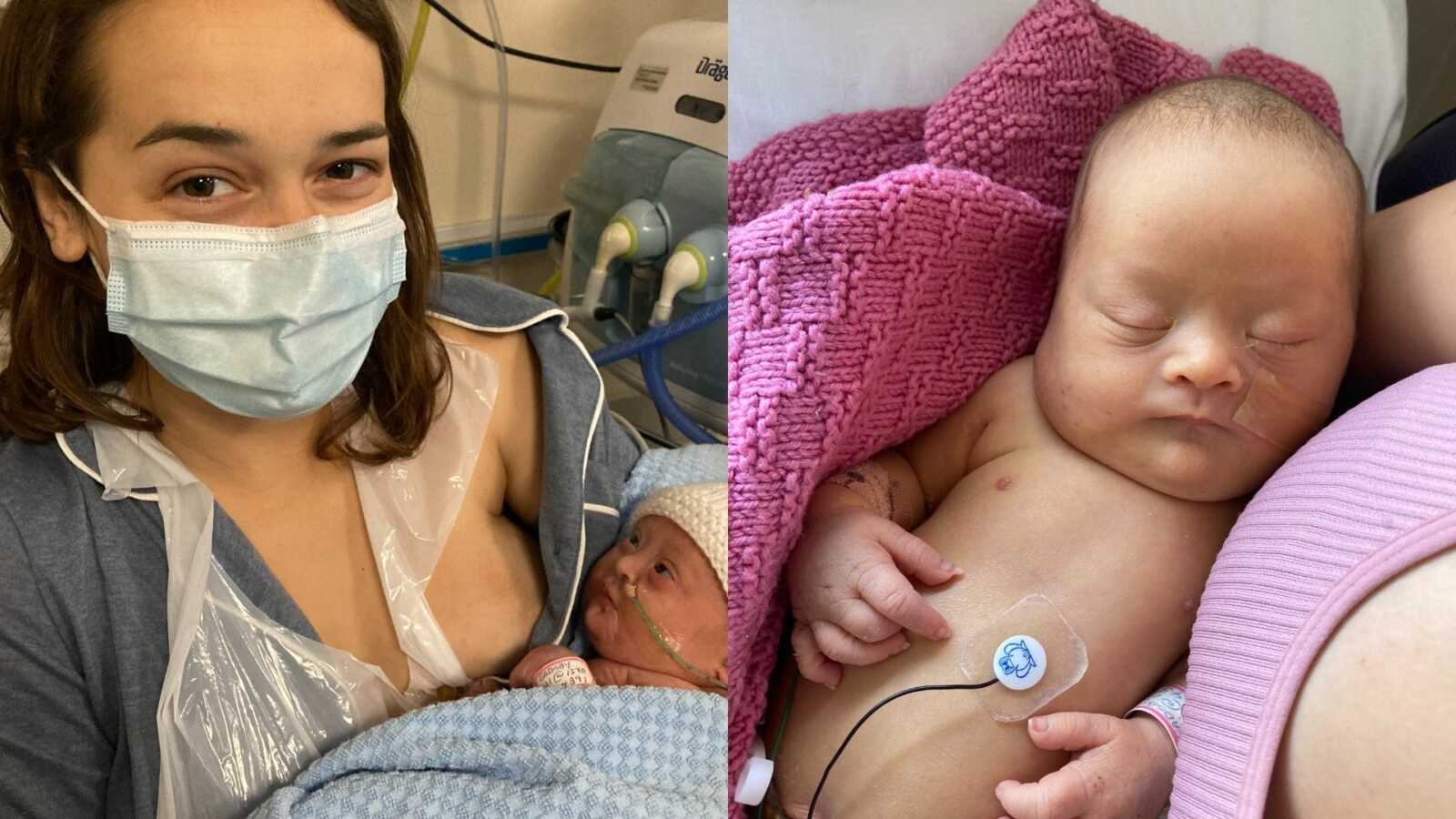“Early on a dark and cold November morning, my partner, Ross, and I were walking the dogs before work. We both saw the same shooting star burn across the sky and we both made a wish to ourselves. After 6 months of trying for our much-wanted baby, we finally fell pregnant in November 2020. It was during the heaviest Covid restrictions and everywhere was in lockdown. We were overjoyed and decided to tell our families and close friends at Christmas when I was 8-weeks pregnant. I had been working as a nurse on a busy surgical ward, and we decided together, it would be safer for me to quit, as Covid cases were rising and the ward was starting to feel like an unsafe place for our unborn baby.
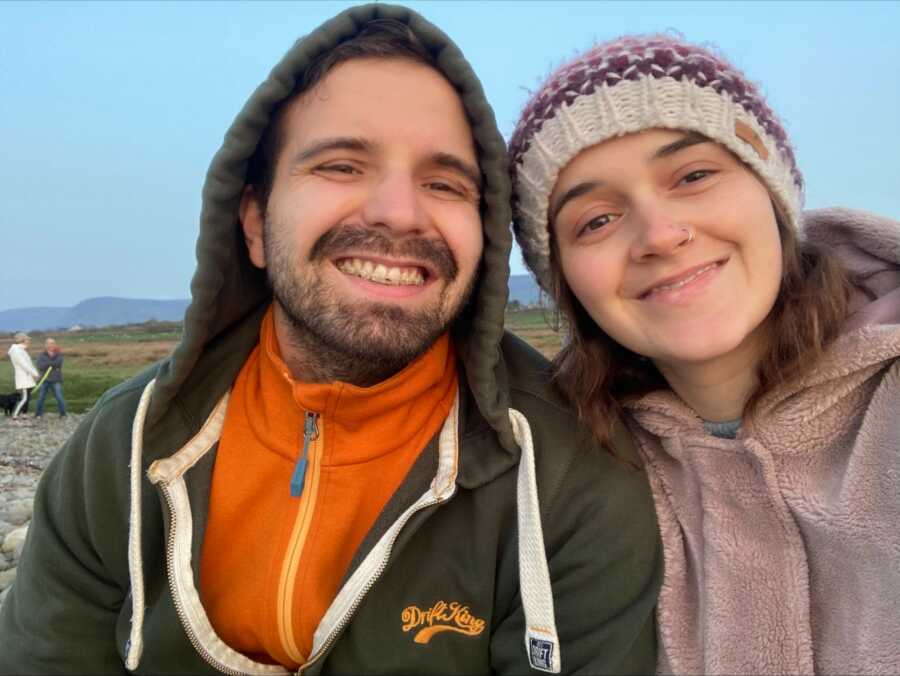
At breakfast, before my 12-week dating scan, we had a casual conversation about the ‘what ifs’ – what if our baby had Down syndrome. Little did we know, our intuition was right. Due to restrictions, I had to attend the scan alone while Ross waited in the car. The sonographer was very thorough but she found delight in my reaction to seeing the tiny miracle we had created on the screen. I was crying with relief and kept saying, ‘I can’t believe there’s someone in there.’
This being my first pregnancy, I didn’t pay any attention to the length of time and the number of measurements the midwife was taking, but eventually, she told me there were some concerning findings with the baby. She explained the baby had some extra fluid (cystic hygroma, and later hydrops fetalis) where it shouldn’t. This fluid could have been caused by a number of things including an infection that comes from cats (we have two), or if you’ve been in contact with a child who has scarlet fever.
The other reason, she explained, could be a ‘chromosomal abnormality‘– a term I’ve grown to dislike. It was so difficult to hear this information by myself and have to relay everything back to Ross. That was actually the most difficult part of the whole pregnancy – not having Ross with me during the times I was receiving heartbreaking information regarding our little baby. On one scan, we found out our baby had a severe heart defect and the extra fluid (hydrops fetalis) was worsening. We were prepared for the worst-case scenario on multiple occasions and told our baby could have a life-limiting condition and they most likely wouldn’t survive.
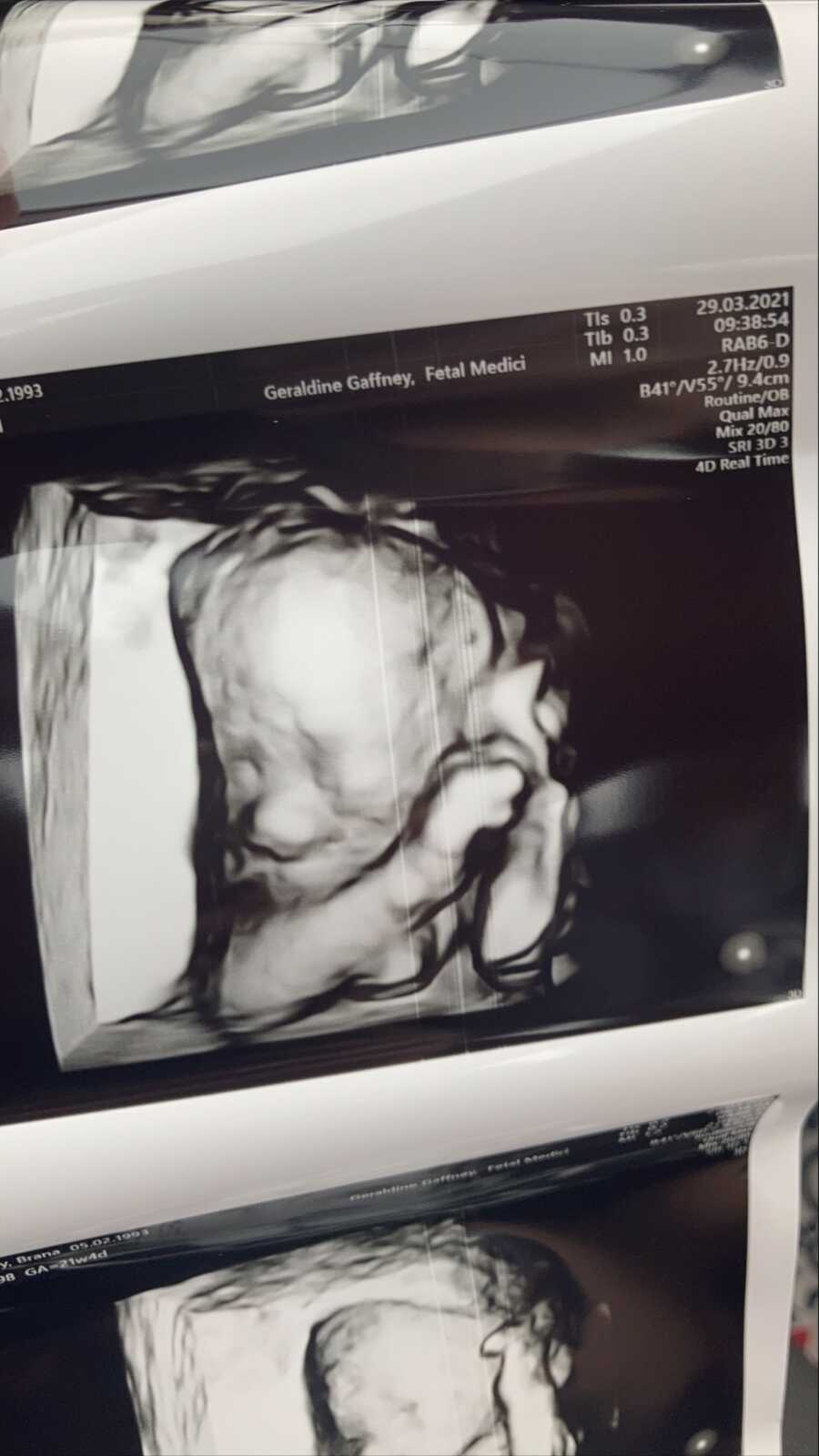
At 15-weeks, I had a procedure called amniocentesis, where a fine needle is inserted into the abdomen to remove amniotic fluid to be tested for chromosomal conditions. After four days, we received a phone call from our fetal medicine consultant with the results we had been hoping for. Our baby girl had Trisomy 21, or Down syndrome. Hearing this was such a huge relief, after so much uncertainty, we finally had a reason for the medical conditions our baby had and we were able to find hope in that little extra chromosome. It was at this point, we decided on a name for our little girl – Evie.
We didn’t know if we’d get to bring her home or how much time we’d have with her. Naming her made us feel more connected so we could talk to her and get to know her better. We kept her name to ourselves until she was born. Scan after scan, our little shooting star kept proving the doctors wrong. I had scans every two weeks, and it soon became apparent that each time they were expecting her heart to have stopped beating. Her first fetal echocardiogram was the most daunting, again without Ross there for support. I was told her heart defect was so severe there was a likelihood that either she wouldn’t make it to full-term, or if she did, she may not survive birth, and if she did that, they wouldn’t be able to perform surgery due to the complexity of the defect.
We were broken and for the first time, I hit an all-time low. Ross told me he was devastated not only at the thought of losing our baby but also because we would likely never have the chance to raise a child with Down syndrome again. In Ireland, abortion had been recently legalized and terminations are offered under certain circumstances. Down syndrome is not one of them, but coupled with a heart defect, it can be offered.
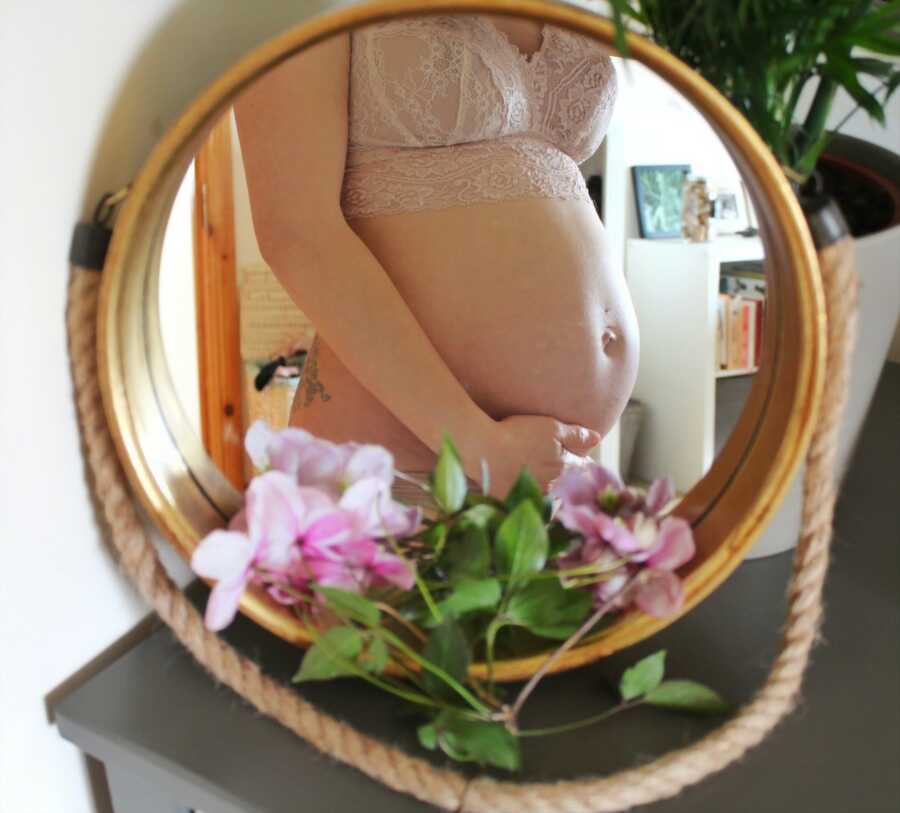
It was mentioned to us on one occasion, but we made it very clear that wasn’t an option for us. At this point, we felt like we were going to lose the battle, but we knew we weren’t going to give up on our baby, so the only way forward was through positivity. We always knew we were going to let her write her own story and support her in any way we could. I turned to social media to start trying to connect with other parents who had children with Down syndrome and I was so comforted to find a whole community on Instagram and Facebook. I quickly began to connect with mostly other mums, some of who had very similar stories to ours. The people I connected with were from Ireland and the UK but also from the rest of the world. This ‘Lucky Few’ family were far and wide but always had endless support to offer.
After connecting with so many other people who were expecting or who had recently had babies with Down syndrome, it became apparent 37 weeks seemed to be the sweet spot for going into labor, for various reasons. With this, we knew relocating to Dublin from 36 weeks onwards, where our obstetrician and Evie’s cardiologist were based, would be the safest option for delivering. Luckily Ross’ parents live 20 minutes from the hospital and we were able to stay with them while we waited for delivery.
My obstetrician was anxious I didn’t go over 40 weeks, due to the theory the placenta would start to fail, and so I was booked for an induction at 39 weeks. At 5 a.m. on the morning of my induction, I woke and went to get out of bed and felt a gush – my water had broken. We got ready and went to the hospital anyway, and I was admitted overnight with the plan to wait for contractions and if nothing happened I would receive IV syntocinon (synthetic oxytocin) to kickstart labor. After 18 hours with my water continuously trickling and not even a twinge of a contraction, I received IV antibiotics and the plan was to go ahead with the induction.
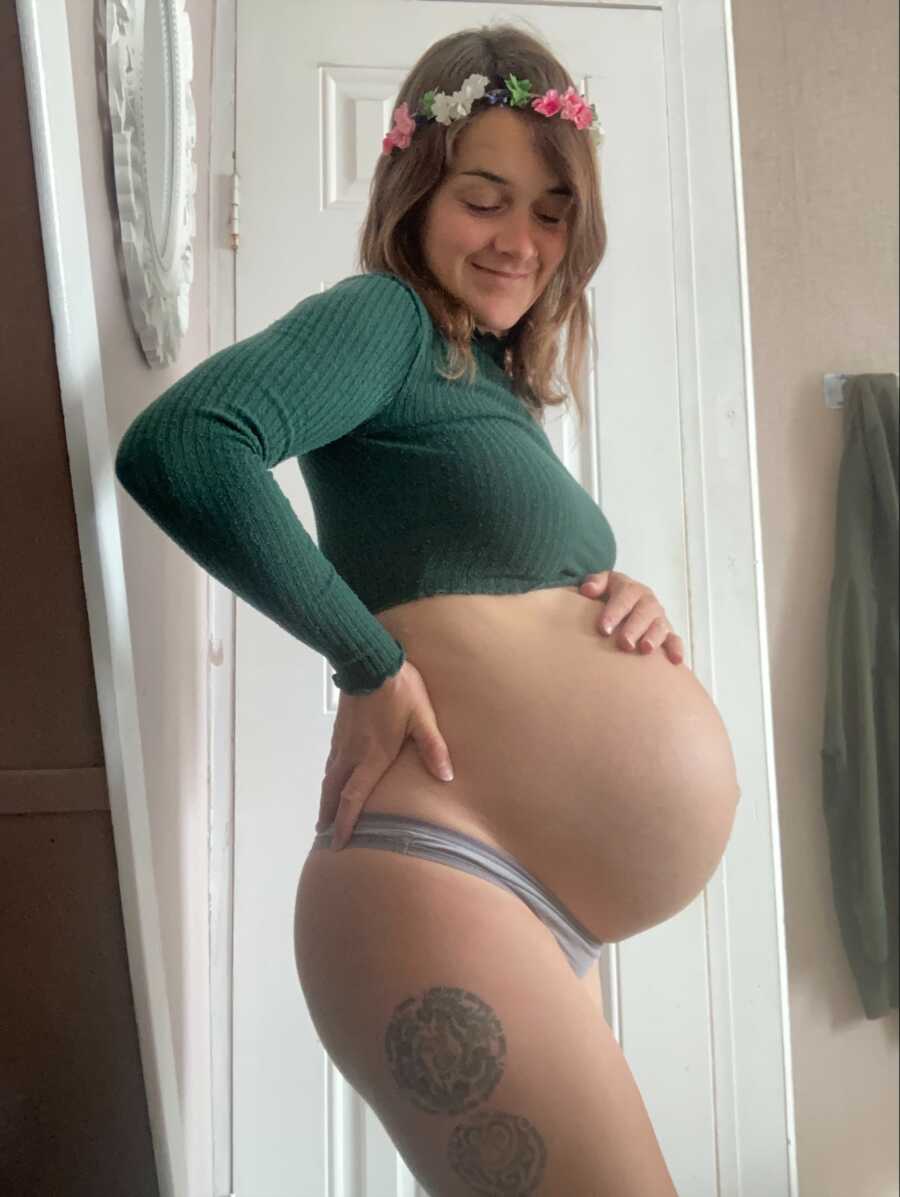
Again, due to Covid restrictions, the hospital policy allowed partners to be present only when the woman was in active labor. They allowed Ross in once I was moved to the delivery suite and started on the drip at 9 a.m. Contractions started and from practicing hypnobirthing breathing techniques throughout my pregnancy, I was able to breathe through them and admittedly quite enjoyed each surge. After 6 hours of strong contractions, despite the IV syntocinon being increased, I wasn’t progressing and Evie’s heart rate on the monitor was dipping with each contraction. The decision was made to perform an emergency C-section.
Evie arrived into the world pink and perfect; she made a small cry and was immediately taken away for some breathing support. Ross went over to see her while I was being stitched back together. I had a brief 2 minutes where they brought Evie back over to me before being transferred to the NICU. It was both the proudest but also the most heart-wrenching 2 minutes of my life. After spending 9 months growing this tiny human and having her with me that whole time, to see her being taken away made me feel like the biggest part of me was missing.
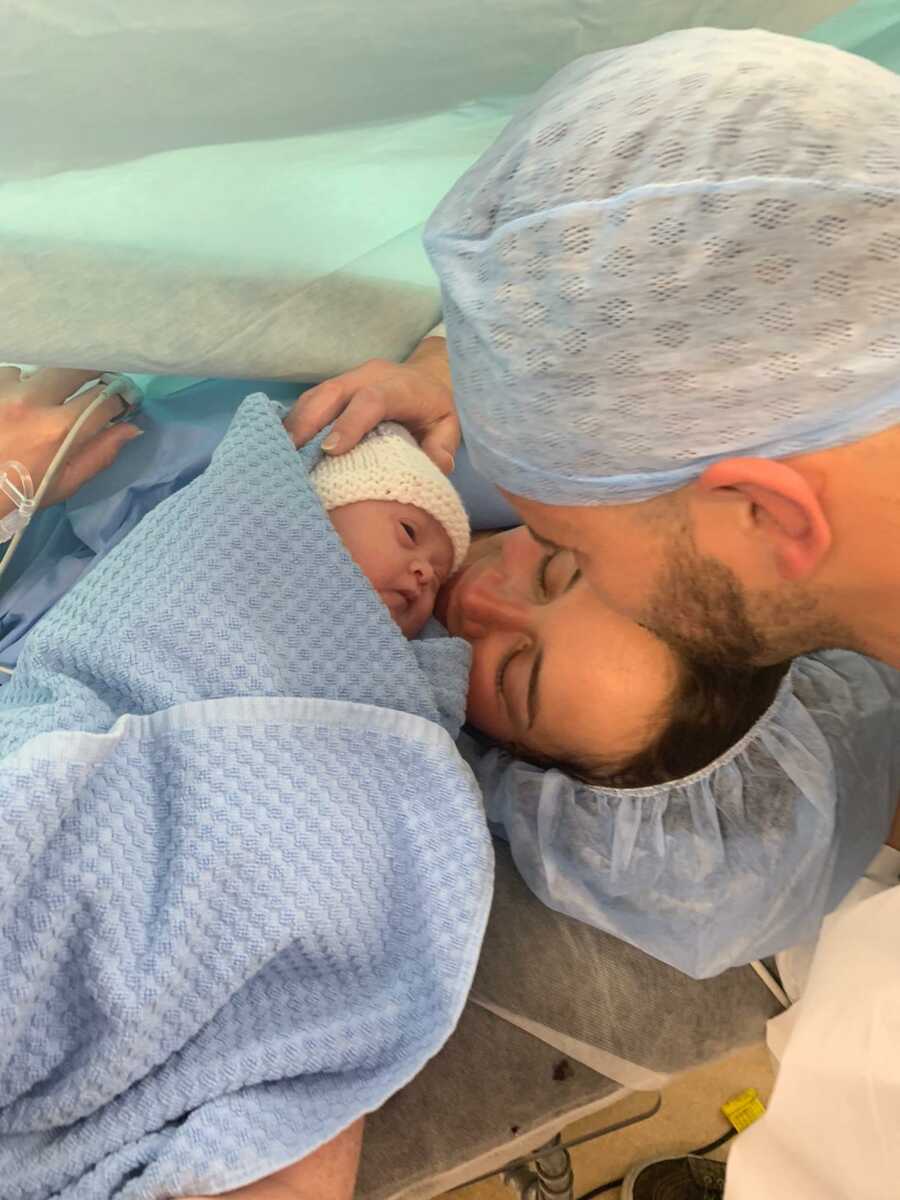
I didn’t get to meet her and hold her until 8 hours later, due to being in recovery and staff shift change over. I’ve just read the first few pages of ‘Bloom,’ a book about a mother who had a birth diagnosis of Down syndrome with her little girl, Nessa. At every sentence, my longing for the birth I had envisioned intensified and I began to feel empty at the thought of how it actually happened. My baby girl, who I took such good care of for 9 months, couldn’t even feel my touch or nurse at my breast, and for the first few hours of her life on earth, she was nestled in an incubator with no familiar smells, sounds, or touch.
Ross held her first while I was still in recovery and he asked me if he should do skin to skin, to which I replied yes, of course. But he was advised by staff to wear a plastic apron and his mask. To hold our daughter, her first familiar encounter was tainted by flimsy white plastic and a disposable blue face covering. It pains me to look back on the first photo I have of me holding Evie. Again, with the flimsy white plastic and mask, my bleary emotionally drained eyes with the smallest glimmer of hope she would be okay.
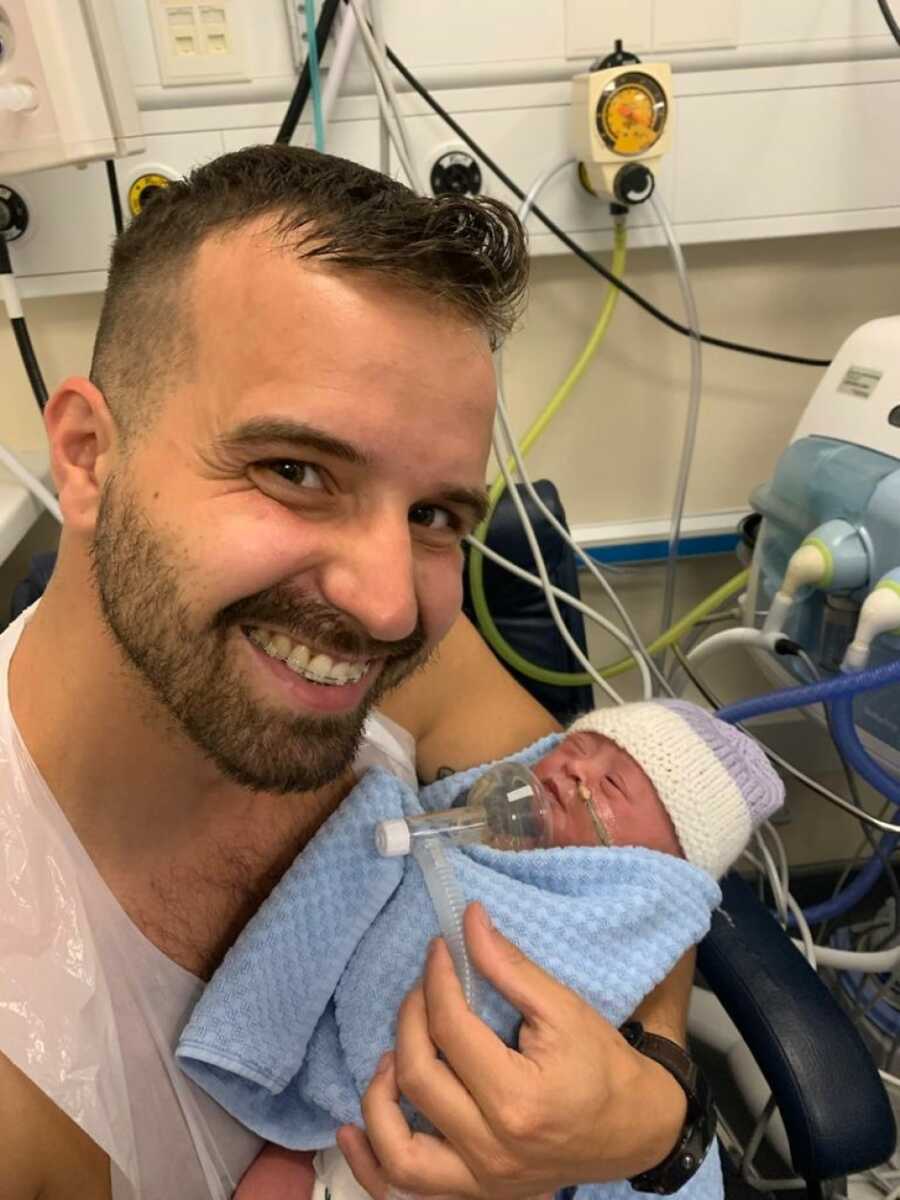
From that first moment though, she was transfixed on me, her tiny little gaze hooked on me – and it still is. Our public health nurse commented on how special our bond is and that she kept thinking about the way Evie looks at me and how she is so interested in my every move. The love I have had and will always have for my little girl is the strongest and most certain emotion I’ve ever felt. Of course, having that bond and being able to spend all of my time with Evie now certainly makes up for the sense of loss I experienced when she was born and the time she spent in the NICU, but I don’t know if I’ll ever get over that really.
Evie, in her short life so far has already shown us so much resilience, determination, and unconditional love. She has lit up so many people’s lives already and I love sharing her journey. Evie has regular cardiology checkups, but her heart defect still remains inoperable and we can only hope that time will be on our side and give us many, many years with our shooting star. I wrote a poem after the 12-week scan and the last lines were, ‘This baby will always be our greatest achievement. We will take any outcome as what is meant to be. Baby, if you come into this world early or late, We will make sure you will always be wild and free.'”
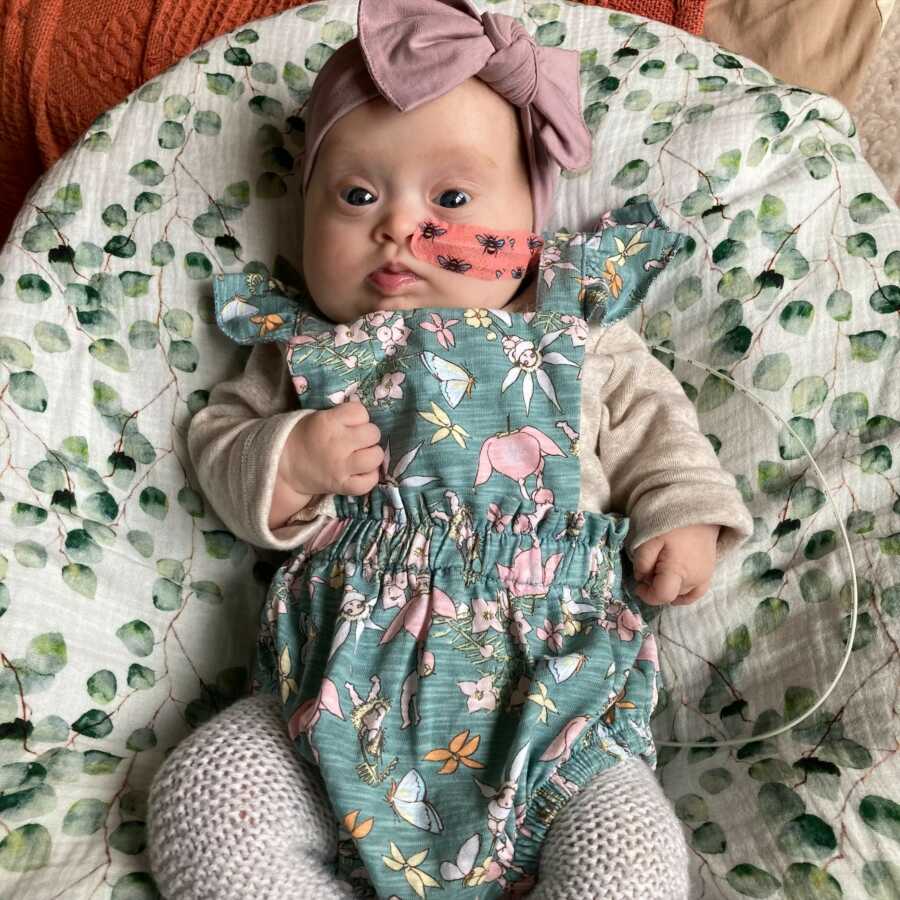
This story was submitted to Love What Matters by Brana Gadsby. You can follow her journey on Instagram. Submit your own story here, and be sure to subscribe to our free email newsletter for our best stories, and YouTube for our best videos.
Read more stories like this:
Provide beauty and strength for others. SHARE this story on Facebook with friends and family.

